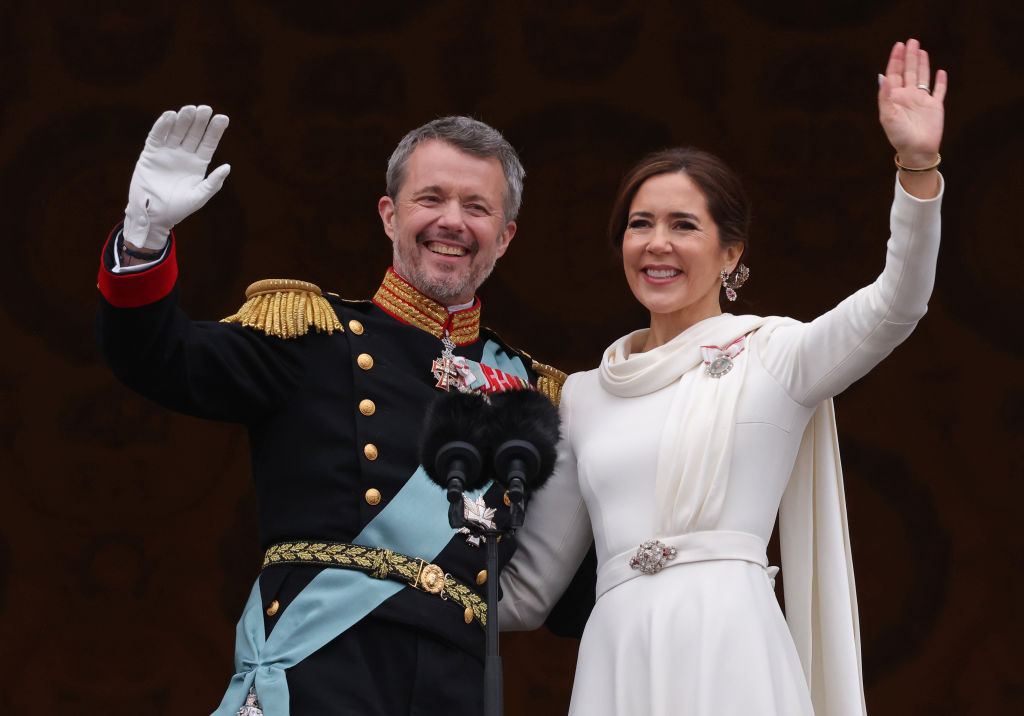Everyone’s obsessed with the new Danish Royals – here’s what the British Royal Family could learn
WORDS: Gaby Hinsliff

She was the middle-class girl who fell for a prince. He was the royal heir whose occasionally fraught relationship with his younger brother ended in the ‘spare’ starting a new life in America. And no, this isn’t Kate and William, but the couple some see as role models for Britain’s young royals: Denmark’s new King Frederik X and his Australian-born wife, Queen Mary, thrust into the spotlight by the surprise abdication of his 83-year-old mother Queen Margarethe.
The new king’s coronation this January was a stripped-back affair by British standards, in keeping with a Danish monarchy that prides itself on being laidback and open. The former queen was often seen out on the streets of Copenhagen walking her dog, her grandchildren attended state primary schools, and tourists can walk close enough to the royal residence to peer through the windows. When Denmark’s prime minister, Mette Frederiksen, said recently that she wasn’t originally a royalist but the outgoing queen had converted her, she spoke for many Danes: fewer than half were pro-monarchy when Margarethe came to the throne in 1972 but over 80% are now. Just 62% of Britons, by comparison, still want an unelected monarch. Can the British royals learn from their Danish counterparts?
Princess of Wales is said to have learned from watching Mary
King Charles is unlikely to be following Margarethe out of the door any time soon, given he has reigned for barely a year compared to her half a century. But the Princess of Wales is said to have learned from watching Mary – a former marketing executive who met her husband in a Sydney pub – integrate into royal life. Both women have chosen to focus on mental health issues like loneliness, bullying and children’s wellbeing; both are also well aware of the need to move with their times, with both families aiming to slim things down to a smaller ‘core’ family of full-time working royals. That helps reduces the cost to the public (once palace upkeep is factored in, Denmark’s royals are thought to cost about half the £86 million British taxpayers shelled out via the sovereign grant last year).
But it can be painful for all involved, as Queen Margarethe found out last year when she stripped her younger son Prince Joachim’s four children of their royal titles. Though she had argued it would let them ‘shape their own lives’ free from royal expectations and duties, both her son and daughter-in-law publicly protested, prompting the then Queen to apologise for the hurt caused. (Another big difference between the families is the Danish royals’ emotional candour; in her New Year address, the Queen had talked openly about how the relationship with her son had run into difficulties ).

Queen Margrethe of Denmark and Prince Joachim of Denmark participates in the Danish Parliament’s celebration of the succession of the throne at Danish Parliament on January 15, 2024
They offer potentially interesting lessons for British royals working out how to manage the breakaway Duke and Duchess of Sussex
Though Prince Joachim has now moved to Washington DC to work for the Danish embassy there, the family seems to have found a way of putting distance between the brothers without breaking ties as dramatically as Harry and William did. They offer some potentially interesting lessons for British royals still working out both how to manage the breakaway Duke and Duchess of Sussex, and how to connect emotionally with the public in a less stiff upper-lipped age where family disputes can’t necessarily be swept under the carpet.
The Waleses, who are already said to be raising Princess Charlotte with the expectation that she’ll need to get a job instead of joining the royal payroll, may also be interested to see how Frederik and Mary deal with their four children’s future roles. Maybe now we know what the former prime minister Gordon Brown meant, when he predicted that King Charles would have a ‘more Scandinavian’ approach; not quite a revolution, but definitely some decluttering.
IMAGE: Getty

